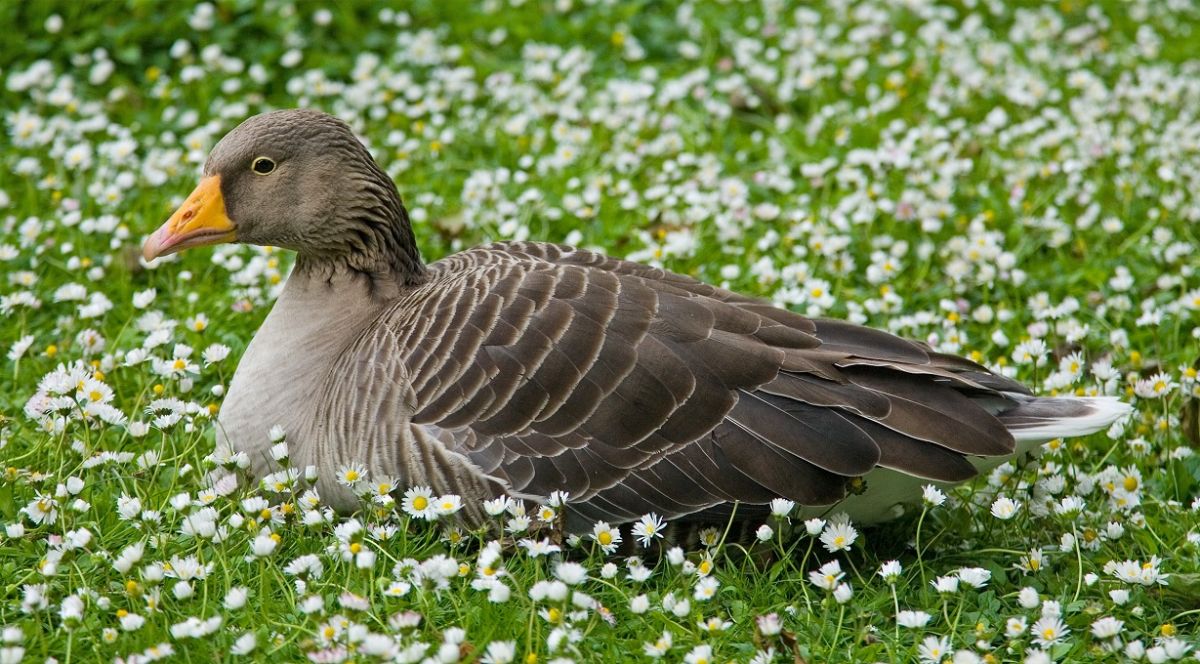Name
Anser anser
Greylag goose
Framing
Phylum: Chordata
Subphylum: Vertebrata
Class: Aves
Order: Anseriformes
Family: Anatidae
Genus: Anser
Species: anser
Habitat
Terrestrial, often associated with aquatic environments. Typically on moors and marshes, also in estuaries, marshes, rivers and other aquatic environments and farmland.
Feeding
Free-living. Gregarious, in pairs during reproduction. Herbivorous, eating bulbs, roots, shoots and grass.
Distribution
Europe and Asia. It has two geographic races, distributed over much of the Eurasian continent. The subspecies anser breeds in much of central and northern Europe, including Iceland and the northern British Isles, while rubrirostris breeds in eastern Europe and central and western Asia.
Conservation status
In Spain it is a wintering bird, worldwide it is not considered endangered.
Additional information
Free-living. Gregarious, in pairs during breeding. Mainly grey, with an orange bill and pink legs. This goose has an overall greyish hue, with the back feathers edged with cream, giving this area a scaly appearance; the flanks are darker and barred with white lines. In contrast to the rest of the plumage, the anal region is pure white. The tail is white, with a dark band at the top. Rather robust in appearance, the only difference between males and females is the larger size of the former. The short, strong legs are pinkish in colour, while the beak - conical in shape - is orange in the anser subspecies and pink in the rubrirostris breed.
Additional information
Bibliography
- Amat, J. A. & Varo, N. (2008). Grit ingestion and size-related consumption of tubers by graylag geese. WaterbirdsI, 31, 133-137.
- Cramp, S. & Simmons, K. E. L. (Eds.) (1977). The Birds of the Western Palearctic. Vol. I. Ostrich to ducks. Oxford University Press, London.
- Del Hoyo, J., Elliott, A., &Sargatal, J. (Eds.) (1992). Handbook of the birds of the World. Vol. 1.Ostrich to Ducks. Lynx Edicions, Barcelona.
- Delacour, J. (1954). The waterfowl of the world. Country Life, London.
- Hudec, K. (1984). Migrational movements of the greylag goose in Europe: a synopsis. Acta Scientiarum Naturalium Brno, 18, 33-55.
- Kear, J. (Ed.) (2005). Ducks, geese and swans. Oxford University Press, Oxford.
- Mateo, R., Bonet, A., Dolz, J. C. & Green, A. J. (2000). Lead shot densities in a site of grit ingestion for greylag geese Anser anser in Doñana (Spain). Ecotoxicology and Environmental Restoration, 3, 76-80.
- Ogilvie, M. & Young, S. (1998). Wildfowl of the world. New Holland Publishers, London.
- Palomino, D. & Molina, B. (Eds.) (2009). Aves acuáticas reproductoras en España. Población en 2007 y Metodos de censo. SEO/Birdlife, Madrid.
- Ramo, C., Amat, J. A., Nilsson, L., Schricke, V., Rodriguez, M., Gomez, E., Jubete, F., Naves, M. & Green, A. (2015) Latitudinal-related variation in wintering population trends of greylag geese (Anser anser) along the Atlantic flyway: A response to climate change? PLoS ONE, 10, e0140181.




